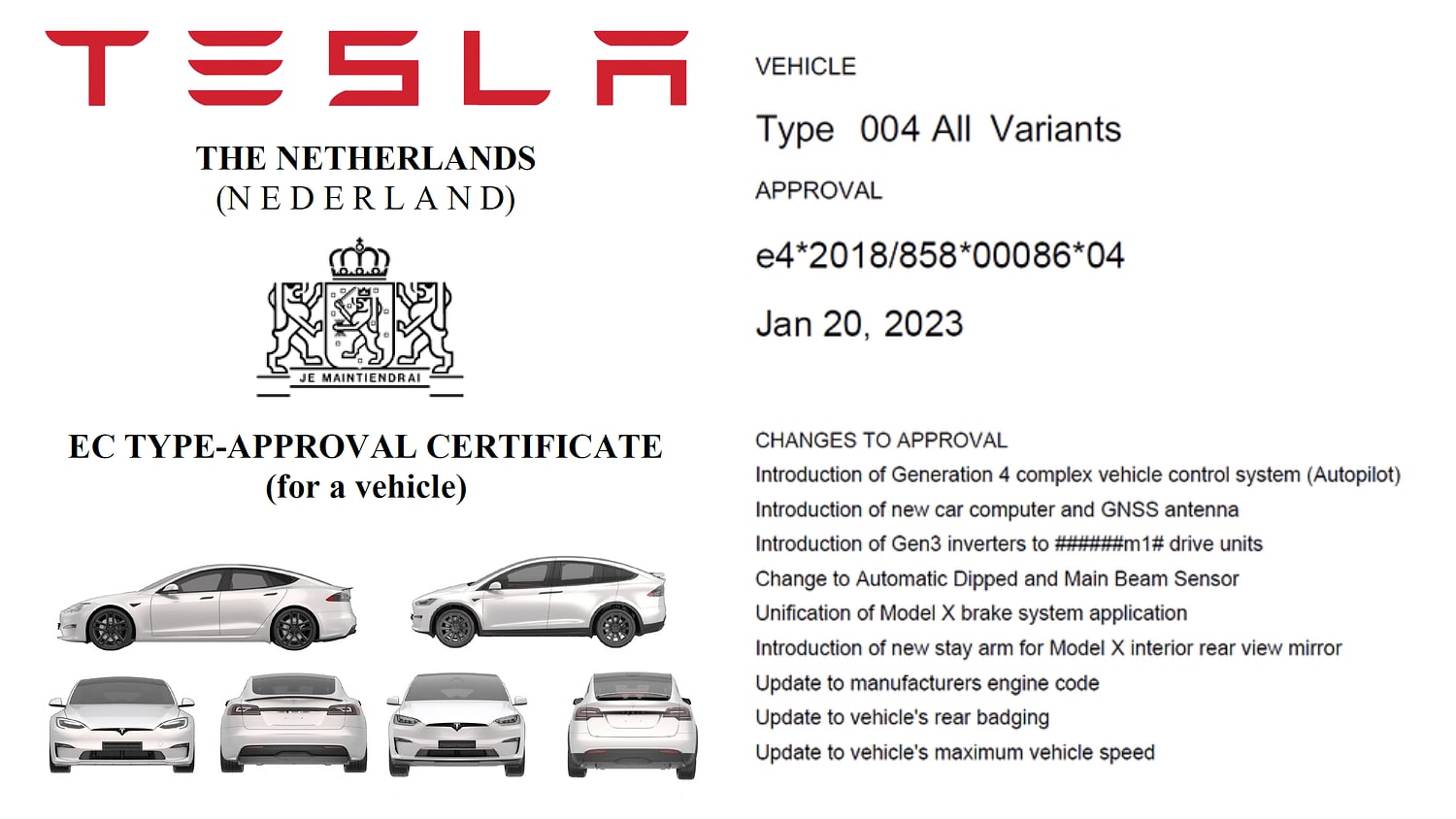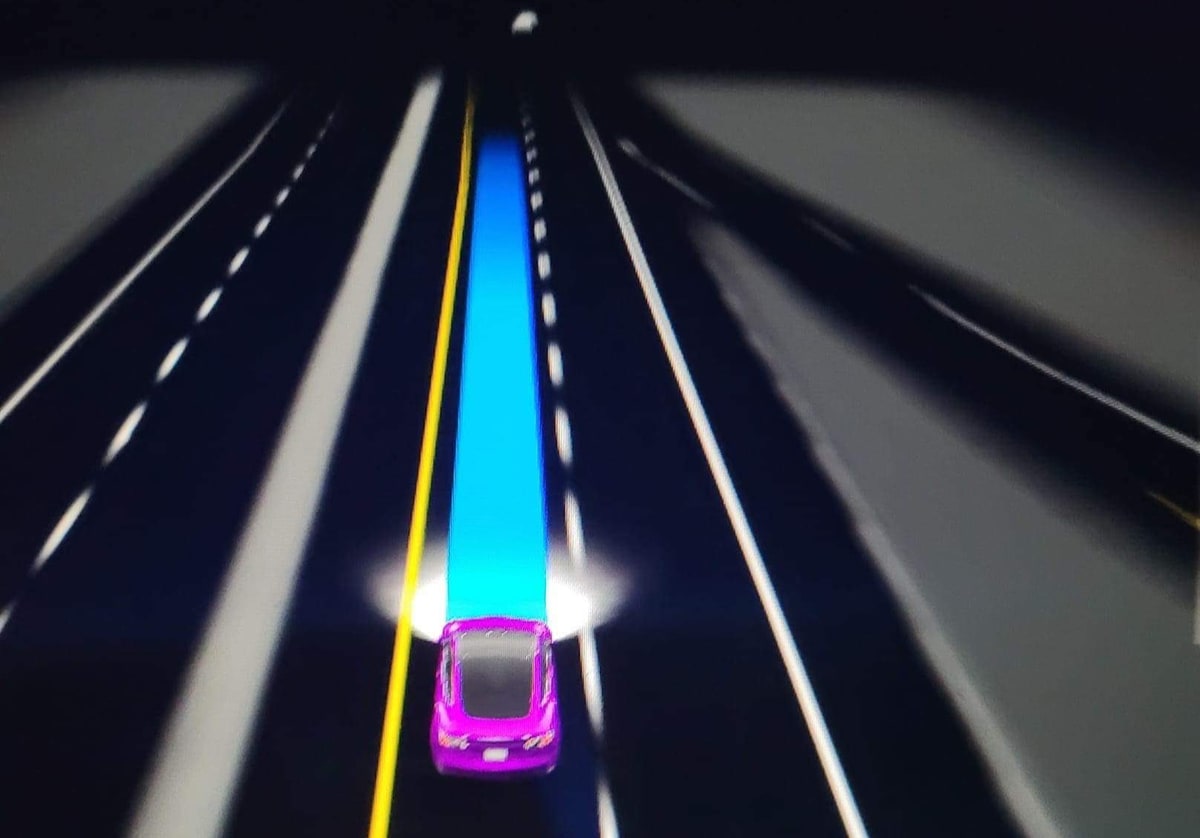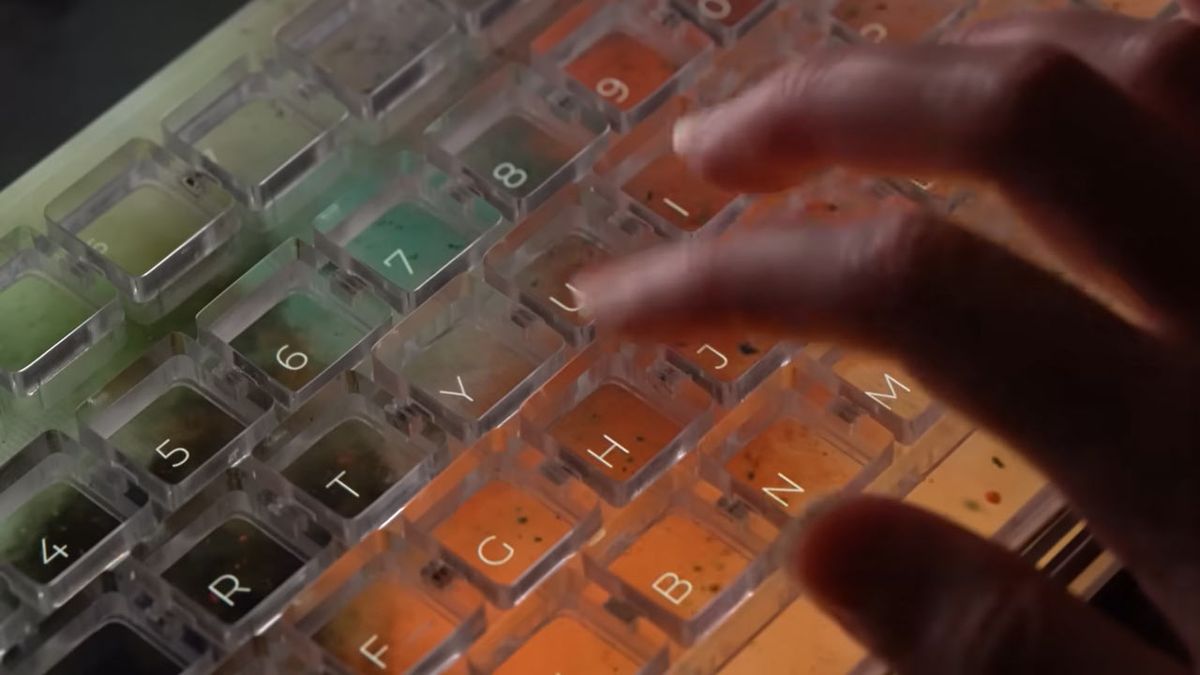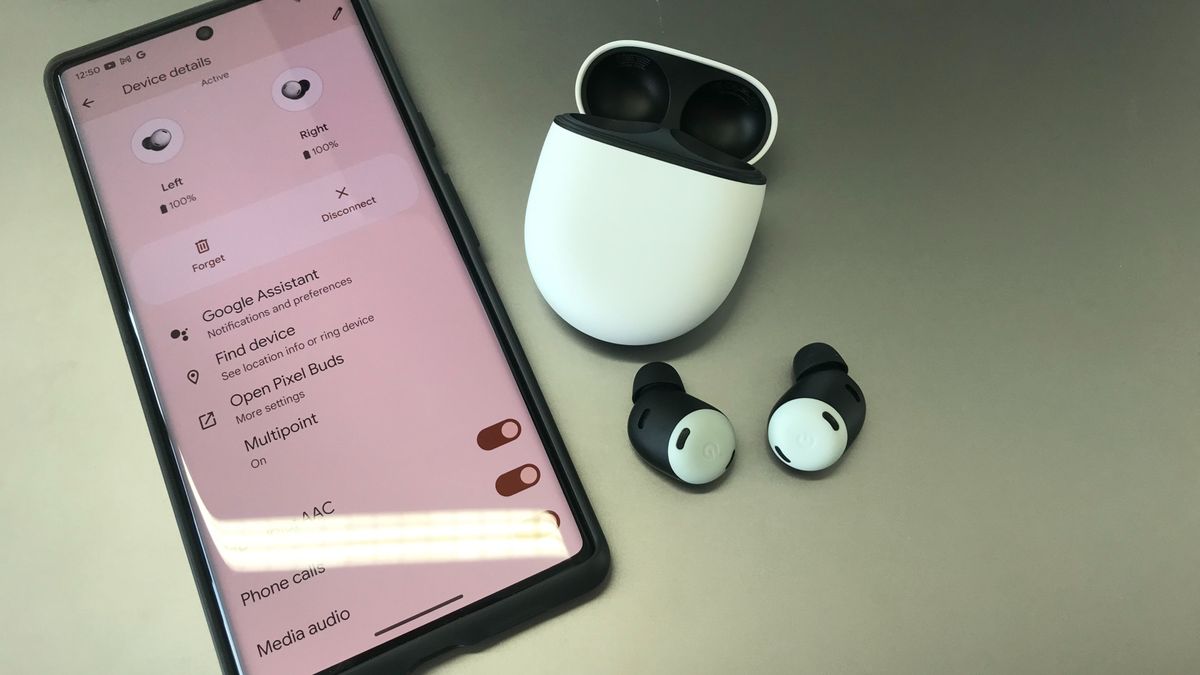Tesla FSD Hardware 4.0 Approved in Europe for New Model S and X

By Kevin Armstrong

Tesla’s highly anticipated FSD hardware 4, also known as HW4, will be installed in new vehicles any day. The company received European approval to sell its latest FSD hardware in the Model S and Model X vehicles.
The timeline for deployment of the new computer that operates the most technologically advanced vehicle in the world has been a mystery. There was some speculation that Tesla may hold off launching the highly advanced system until Cybertruck’s release. However, only a limited number of Cybertrucks are expected this year, with full production starting in 2024.
Several Changes Incoming
Several other changes are being made to Teslas according to the European Certificate, issued by the Dutch vehicle authority RDW, dated January 20, 2023. The maximum speed for the Model S is increasing to 174 MPH (280 km/h) from the factory. But owners can tack on even more speed with the optional Carbon Ceramic Brake Kit, which will boost the car to the previously mentioned 200 MPH (322 km/h). It sounds like the Carbon Ceramic Brake Kit option may soon become available.
Hardware 4.0
Unfortunately, the European certificate doesn’t reveal any details on what is included in Tesla’s 4th generation Autopilot hardware. The system is expected to use 5-megapixel cameras, which will give Autopilot a substantial advantage in determining objects that are further away. The new hardware will also include a new FSD computer which is expected to be about 4x more powerful than the FSD computer in hardware 3 today. Additionally, HW4 is expected to include an HD radar, which could significantly improve FSD. In the same line item as the new FSD computer, Tesla also mentions a new GNSS antenna that is used for GPS. However, GNSS antennas also provide support for other systems such as GLONASS, Baidu, and Galileo.
Other Changes to the Model S and Model X
Other approved European updates are new Gen3 inverters and changes to the automatic headlights. In addition, the Model X will have a unified braking system and a new stay arm for the interior rear-view mirror. Finally, the cosmetic changes that rolled out in North America last month will also be implemented in Europe with the rear badging.
Retrofits will not be Offered by Tesla
It is yet to be known when the new hardware will debut, but Tesla will not retrofit the existing fleet. During the fourth quarter earnings call, Elon Musk said that the “cost and difficulty of retrofitting hardware 3 with hardware 4 is quite significant. So, it would not be, I think, economically feasible to do so.”
This could be due to the new HD radar, new power, or space requirements for the new computer or radar, or due to complexities with wiring harnesses. It would also put a huge burden on Tesla Service, which would have to upgrade millions of vehicles. There could also be more to hardware 4.0 that has not been disclosed.
Model 3 and Model Y
It’s not surprising that Tesla has decided to introduce hardware 4.0 to the Model S and Model X first. These are lower-volume vehicles and it makes sense for them to slowly roll out these changes. Parts may still be limited or Tesla may want to reduce the cost of a recall if there are any issues with the new hardware. We know the upcoming Cybertruck will also use hardware 4.0, but that still leaves the Model 3 and Model Y out. However, we speculate that Tesla will try to get the Model 3 and Y updated as soon as possible. Once the word is out that the Model S and Model X vehicles include hardware 4.0, many owners may prefer to wait before ordering or taking delivery of a Model 3 or Model Y.
We will likely find out more about FSD hardware 4.0 very soon as these vehicles start being delivered to customers.
By Lennon Cihak

Tesla CEO Elon Musk has reportedly donated 11.5 million shares, or about $2 billion, in Tesla shares to charity as a “bona fide gift,” as described in a US regulatory filing. It is unclear where he donated the shares, but it is assumed to be to his own, The Musk Foundation.
According to the SEC filing, Musk donated the shares between August and December 2022. They equated to about 1.6{38557cf0372cd7f85c91e7e33cff125558f1277b36a8edbab0100de866181896} of Musk’s total Tesla shares and are now worth around $2.4 billion after Tesla’s stock recovery from a tumultuous 2022.
Musk, who is frequently found atop the world’s richest people, currently has a net worth of $198.2 billion, according to Forbes’ real-time billionaire tracker. Bernard Arnault, CEO of LVMH, tops the list with a mind-numbing $213.4 billion, $15 billion more than Musk.
The Musk Foundation, Elon Musk’s Charity
This is not the first time Musk has leveraged his massive wealth for good. In 2021, he donated $5.74 billion worth of shares, per a regulatory filing, to The Musk Foundation. That same year in January, he announced that he would donate $100 million to a person or company that develops the best carbon capture technology.
His $5.7 billion instantly made The Musk Foundation one of the largest in the United States, according to Fortune. During this period, Musk donated $55 million to the Memphis-based St Jude Children’s Research Hospital and another $54 million to the X Prize Foundation, which he partnered with to fund the carbon capture and removal projects.
Largest Donation in 2022
According to Chronicle of Philanthropy, which was completed last year before Musk’s SEC filings, Microsoft founder Bill Gates landed at the No. 1 spot with a whopping $5.1 billion in donations. Michael Bloomberg’s $1.7 billion garnered him the No. 2 spot.
New Twitter CEO
Recently, Musk said that he was looking for someone to replace him as the CEO of Twitter, his newly acquired social media platform. With Musk’s workload being quite significant, he’s looking to appoint a new CEO by the end of 2023 so he can step-down and focus on other things. He even considered hiring philanthropist and YouTube star MrBeast as Twitter’s CEO.
“I think I need to stabilize the organization and just make sure it’s in a financially healthy place and that the product roadmap is clearly laid out,” Musk said at the World Government Summit in Dubai. “I’m guessing probably towards the end of this year should be good timing to find someone else to run the company because I think it should be in a stable position around the end of this year.”
By Nuno Cristovao

Over the weekend Tesla released FSD Beta V11.3 (release notes) to more employees. It’s not clear whether all employees now have access to the latest beta or if the number of employees was expanded.
Tesla typically releases the latest FSD Beta to all employees as a final test before starting its public release. We could see the first public release of the beta later today.
Elon Musk said earlier this month that FSD Beta V11.3 would start rolling out last week. However, it could be a while before it rolls out to everyone with FSD Beta installed. According to the latest Tesla ‘recall,’ Tesla now has 362,000 vehicles in the US and Canada running FSD Beta.
Improved Visualizations
We previously heard that FSD Beta V11 would include improved visuals. We now have our first look at these improvements. From the leaked photo we can tell the vehicle’s path is much wider. The reason for this could be that Tesla wants to not only represent the path the vehicle will take, but also the space the vehicle will take up when it’s at a specific location.
Another obvious change is the removal of the red road edges. They appear to have been replaced with light gray lines instead, which fits in with Tesla’s simplistic style of the surrounding environment.
The dotted lines between the lanes also have a different style. They used to be very defined and now have a slight blur to them, similar to other road markings. It’d be interesting to see if Tesla is now using vision to determine the dotted line width and length.
It’s hard to tell much else from the image, but the vehicle appears to be on a highway, which means that the FSD Beta visuals will be applied to highway use as expected. It’s not clear whether there are other improvements in the visualizations or if can detect new objects.
New Features
With the expansion of the beta to more employees, the release notes for V11.3 have now been leaked, at least partially. The biggest feature on the list is the expected single-stack transition, where Tesla will now use everything it has learned from FSD Beta on city streets and use the same technology for Autopilot on the highway.
However, the list of improvements is long and notable.
Leave Notes About a Disengagement
One of the improvements in this beta according to the release notes is the addition of ‘voice drive-notes,’ which will allow you to comment on a disengagement with an audio description.
– Added voice drive-notes. After an intervention, you can now send Tesla an anonymous voice message describing your experience to help improve Autopilot.
This will presumably be done through a voice command and Tesla is likely transcribing these to text on their end to make them readable and searchable instead of having to listen to a message, although it appears that you will be able to leave a comment after a disengagement. This may work similarly to the ‘Report a bug’ feature.
Expanded Automatic Emergency Braking
With this beta, Tesla is expanding Automatic Emergency Braking (AEB) to handle vehicles crossing in your path. AEB was limited to when approaching another vehicle from behind, however, Tesla is expanding this to also apply to vehicles crossing your path. Although this is lumped in with the FSD Beta’s release notes, and it depends on vision and improvements made with FSD Beta, it will not only apply to FSD/Autopilot but also when you’re driving manually.
In the release notes Tesla mentions that according to data they’ve collected this improvement with AEB would have prevented 49{38557cf0372cd7f85c91e7e33cff125558f1277b36a8edbab0100de866181896} of collisions.
Improved Highway Handling
One of the features I’m excited to see in this release is the improvement to the vehicle’s path when traveling on the highway. If you encounter a sharp turn, the vehicle tends to get too close to the outside of the curve instead of keeping itself in the center of the lane.
This will apparently be improved with this update as Tesla says there is improved handling at high speeds in high curvature scenarios.
The release notes cover other improvements as well, such as improved lane changes and mergers, as well as object detection and decision-making refinements.
This software version that was released to employees is version 2022.45.5, which is untraditional for Tesla since it has an odd week in the version number, although since we’re getting closer to the expected release of FSD Beta V11.3, it’s possible this could be the version everyone receives in the coming weeks.
Now that release notes and the first image has been shared, we may soon see what else is included in this update. To find out more about this beta, check out the release notes for FSD Beta V11.3.








